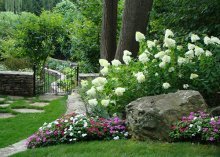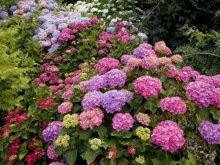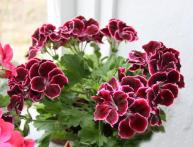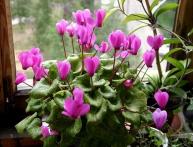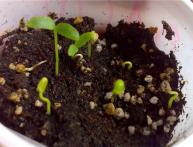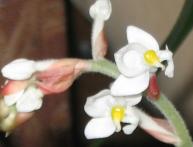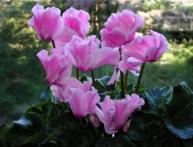Hydrangea: care and cultivation in the garden
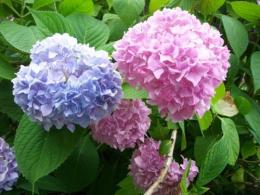
Blooming hydrangeas are so beautiful that they will not leave anyone indifferent. Under natural conditions, there are 70 species of this shrub. Of these, four species can be grown in open ground, the rest - as indoor plants.
Content:
- Basic principles of caring for and growing hydrangea in the garden
- Some secrets of an individual approach to hydrangea species
- Diseases and pests of hydrangea
Basic principles of caring for and growing hydrangea in the garden
Choosing a place for placement of hydrangeas It should be borne in mind that she will feel best not in direct sunlight, but in partial shade. It is important to never plant the plant in dense shade or draft. Hydrangea is not picky about soil composition and grows well even in the poorest soils. The optimal composition is a mixture of equal parts:
- sand
- peat
- leaf soil
- turf land
A slightly acidic environment is preferable. For successful cultivation on alkaline soils, it is necessary to water the plant once every two weeks with a solution of iron-containing salts to neutralize the alkaline environment.
The planting pit should be prepared several days before the intended planting. Its size depends on the volume of the root system of the future plant and the height of the shoot. Usually a hole up to 60 cm wide and 40 - 50 cm deep is enough. A pre-prepared mixture is poured into the bottom of the hole.
Planting material can be:
- divided bush
- rooted cuttings
- two-year-old seedling
Place the seedling in the planting hole in such a way that its root collar is not deeply buried in the soil, but is at its level or a couple of centimeters below; the roots of the plant should not be outside. When groundwater is close to the ground, the hill planting technique is used.
By covering the roots with soil, the tree trunk circle is well compacted. After abundant watering, mulch to avoid crust formation. In the future, the plant will require abundant watering and regular loosening. When loosening, avoid damaging roots close to the surface.
For abundant flowering, at least three times during the summer season, it is necessary to apply mineral fertilizers. At the beginning of the season - nitrogen and potassium. In the middle and at the end - phosphorus and potassium. Throughout the warm season, hydrangea requires abundant watering. Bushes older than three years of age undergo regular pruning.
In addition to general principles, there are also individual characteristics of growing and caring for different types of hydrangeas.
Some secrets of an individual approach to hydrangea species

There are four main types of hydrangeas grown outdoors:
- paniculata
- tree-like
- ground cover
- Sargent
Hydrangea paniculata reaches a height of up to two meters. Requires annual early spring pruning of all shoots to approximately half. The species is frost-resistant and overwinters without shelter. Propagated by cuttings in early summer.
Hydrangea sargenta is the most heat-loving of all species. Since the plant is subject to winter freezing, every autumn the bushes are pruned into a “stump” 15-20 cm high. Additionally, they are covered with spruce branches or other covering material. Prefers well-lit places.
Hydrangea tree - the tips of the shoots can be damaged by frost; they are removed during spring pruning twice: before opening and after opening of the buds. To prevent freezing, the bush is covered with spruce branches or other material for the winter period.
Groundcover hydrangea tolerates winter well and does not require shelter for the winter. Many people know that if you water with acidic alum, you can change the color of the inflorescences. But there is a “folk” way to get bright colors: pour a kilogram of young crushed nettle with a liter of boiling water, leave, strain and add to a bucket of water. Watering with “green” fertilizers should begin at the budding stage, before the inflorescences open.
Diseases and pests of hydrangea
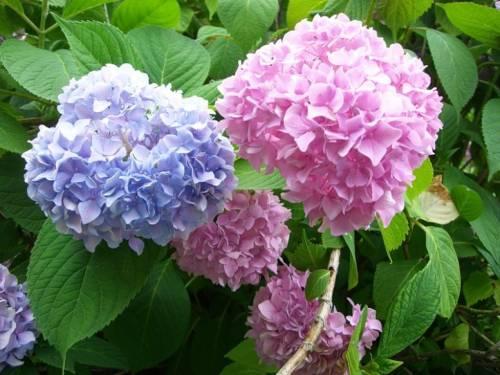
Basic prevention hydrangea diseases timely pruning and removal of excess shoots. Although hydrangea is a moisture-loving plant, under no circumstances should water stagnate on the soil surface or become waterlogged.
If preventive measures were not enough and the plant became sick:
- powdery mildew
- gray rot
- septoria
First of all, it is necessary to take measures to drain the plant, remove and destroy damaged parts and treat with fungicidal preparations:
- topaz
- jet
- pure flower
Hydrangeas are attractive to insect pests such as:
- aphid
- scale insects
- bedbugs
- spider mites
If aphid attack insignificant, it can be washed off with soapy water; in severe cases, treat the plant with the following preparations:
- Tanrek
- Spark
- Bison
Suitable against bedbugs:
- green soap
- karbofos
- Fufanon
The hardest thing to deal with is scale insects.A small number of them can be collected and destroyed manually. Otherwise, you will have to treat the entire plant with kerosene emulsion or other mineral oil. You can fight spider mites in the same way as you can fight aphids.
Care for indoor hydrangeas is the same as for garden forms. Following the rules of care will make dreams of a beautiful blooming hydrangea a reality.
Admire the beauty of hydrangea blossoms in the video:
Interesting information about the vegetable garden

